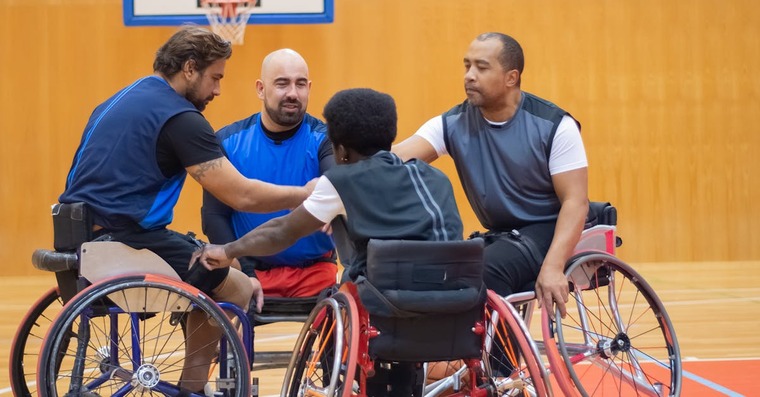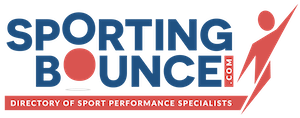
Did you know that diverse teams bring together unique perspectives that lead to improved creativity and innovation in strategies and training methods?
However, building an inclusive sports team isn't just about gathering different people together. In fact, exercise has been proven to increase confidence and reduce feelings of depression, anxiety, stress, and loneliness - but these benefits only materialize when we create an environment that truly celebrates human differences.
As coaches, we need to understand that inclusivity in sport goes beyond mere representation. It encompasses race, ethnicity, gender, age, sexual orientation, and abilities. Furthermore, key principles of inclusive coaching, such as self-awareness, active listening, and tailored methods, are essential for creating a supportive environment where every athlete can thrive.
In this step-by-step guide, we'll show you practical strategies to build and nurture an inclusive sports team that celebrates diversity while maximizing performance. Let's get started!
Measuring the impact of inclusivity in sport starts with a thorough understanding of your team's diversity landscape. Primarily, this involves analyzing three key areas: [team composition](https://www.sportingbounce.com/blog/how-to-run-team-building-activities-that-actually-work-a-coach-s-guide), individual needs, and cultural dynamics."We are all different, which is great because we are all unique. Without diversity, life would be very boring." — Catherine Pulsifer, Author and personal development expert
The first step involves gathering both quantitative and qualitative data about your team. Participation rates and demographic information help pinpoint groups that aren't being engaged by your current efforts [1]. Additionally, surveys and focus groups can provide rich insights into how different groups experience your sport environment [1]. Through these assessments, we can identify potential barriers to participation and develop data-driven strategies for improvement.
Each athlete brings unique needs, motivations, and experiences to the team. Notably, players with intellectual disabilities may face challenges in understanding technical instructions or pacing during competitive situations [2]. Consequently, coaches must adapt their communication methods and training approaches based on individual requirements. Regular conversations with athletes help understand their personal goals, confidence levels, and potential barriers to participation.
Cultural diversity essentially acts as a double-edged sword in team dynamics. On one side, it creates a broader pool of unique information, knowledge, and skills beneficial for problem-solving and decision-making [2]. On the other side, cultural differences can lead to communication challenges and potential subgroup formation [2]. To address this, shared team experiences over time can help develop stronger relationships and enhance knowledge sharing among team members [2].
One effective approach to managing cultural diversity involves:
Understanding country-specific sporting knowledge
Recognizing communication patterns across cultures
Developing strategies for cross-cultural collaboration
Creating opportunities for shared experiences
Building an effective inclusion framework requires a structured approach that combines clear policies with practical implementation. Primarily, this framework serves as the foundation for creating a sports environment where every athlete feels valued and respected.
The first step involves establishing explicit anti-discrimination guidelines that unequivocally condemn any actions or language rooted in prejudice [3]. Rather than creating policies behind closed doors, involve team members in developing these values to ensure authentic buy-in [4]. Accordingly, these values should reflect your commitment to fairness, respect, and equal opportunities for all athletes.
Effective communication forms the cornerstone of an inclusive team environment. Specifically, coaches need to recognize that every individual has unique communication preferences - some might be direct, others may prefer a more subtle approach [2]. Moreover, creating a safe space where team members feel comfortable expressing their thoughts without fear of judgment is essential [2].
To foster inclusive communication, consider these key elements:
Practice active listening and provide regular opportunities for feedback
Adapt communication styles based on individual needs
Ensure messages are clear, concise, and free from jargon
Offer multiple channels for team members to share their thoughts
An inclusive framework specifically requires ongoing evaluation and refinement. Therefore, establish regular check-ins to assess the effectiveness of your communication strategies and make necessary adjustments based on team feedback [2]. This approach ensures your framework remains responsive to the evolving needs of your diverse team while maintaining its effectiveness in promoting inclusivity in sport.
Strong team connections form the bedrock of successful inclusive sports teams. Primarily, these connections develop through [structured activities](https://www.sportingbounce.com/blog/how-to-build-mental-resilience-in-young-athletes-a-coach-s-step-by-step-guide) that bring athletes closer together while respecting individual differences."The strength of the team is each individual member. The strength of each member is the team." — Phil Jackson, Former NBA coach with 11 championship titles
The "Common Ground" exercise stands out as an effective starting point, where team members find five shared interests beyond sports [5]. Likewise, the "Guess Who" activity encourages athletes to share cultural elements like favorite traditional dishes or books that celebrate their identity [6]. These initial interactions help break down preconceptions and create an atmosphere of openness.
Trust forms the foundation of any successful team dynamic [7]. To foster this essential element, incorporate activities like:
The "Trust Walk," where paired athletes guide each other through obstacles
"Human Knot" exercises that require coordinated problem-solving
"Blind Square" challenges that enhance communication and leadership
Team bonding extends beyond formal training sessions. Indeed, organizing movie nights with films that showcase different cultures creates natural discussion opportunities [6]. Simultaneously, implementing "Appreciation Circles" allows team members to express gratitude and recognize each other's unique contributions [8]. These shared experiences help develop fundamental skills in sportsmanship, including respect for others and team spirit [9].
Although these activities might seem simple, they create lasting impacts on team dynamics. Through regular implementation of these connection-building exercises, coaches can create an environment where every athlete feels valued and understood. These structured interactions help transform a diverse group of individuals into a cohesive unit that celebrates and benefits from its differences.
Practical implementation stands at the heart of successful inclusive sports coaching. Initially, adapting your training methods and creating balanced groups requires a systematic approach that considers every athlete's abilities and needs.
The STEP tool offers a fundamental framework for adapting sports activities [3]. This method breaks down adaptations into four key components:
Space: Adjust training areas to accommodate different mobility needs
Task: Modify activities to match varying skill levels
Equipment: Adapt gear to enable participation
People: Consider group sizes and interaction patterns
Subsequently, coaches must ensure that all activities can be modified to meet individual needs [10]. For instance, in a basketball program, offering multiple game variations enables participation across different skill levels. Fundamentally, these adaptations should focus on creating opportunities where everyone can engage meaningfully in the training session.
Primarily, balanced group formation involves matching players with similar abilities while maintaining diversity within each group [4]. This approach helps create zones that assist in implementing specific rules for different skill levels. Furthermore, regular evaluation of group dynamics ensures that each athlete receives appropriate challenges and support.
When structuring practice sessions, coaches should prioritize activities that enable all participants to contribute meaningfully [10]. This might involve creating smaller groups for specific drills or implementing rotation systems that give everyone equal opportunities to participate. Additionally, incorporating peer support systems within groups can enhance learning experiences and build stronger team connections.
By consistently applying these principles, coaches can create an environment where every athlete feels valued and capable of reaching their full potential [11]. Regular assessment of training methods and group dynamics ensures that adaptations remain effective and responsive to changing team needs.
Building an inclusive sports team demands dedication, understanding, and consistent effort from coaches and team members alike. Through careful assessment of team diversity needs, clear communication frameworks, and thoughtful connection-building activities, we can create an environment where every athlete thrives.
Success lies in the details - from adapting training methods that accommodate different abilities to fostering trust through targeted team exercises. These elements work together, making our teams stronger and more resilient while celebrating individual differences.
Remember that inclusivity isn't a destination but an ongoing journey. Regular evaluation of our strategies helps ensure we're meeting the evolving needs of all team members. Most importantly, when coaches commit to creating truly inclusive environments, athletes develop not just athletic skills but also lifelong values of respect, understanding, and appreciation for diversity.
Let's continue building sports teams where every athlete feels valued, supported, and empowered to reach their full potential. After all, the strongest teams are those that embrace and celebrate what makes each member unique.
Q1. What are some effective strategies for creating an inclusive sports team? To create an inclusive sports team, coaches should conduct team assessments, set clear anti-discrimination guidelines, practice active listening, adapt communication styles, and implement team-building activities. Regular evaluation and refinement of these strategies are crucial for maintaining an inclusive environment.
Q2. How can coaches adapt their training methods to accommodate diverse abilities? Coaches can use the STEP tool (Space, Task, Equipment, People) to adapt training methods. This involves adjusting training areas, modifying activities for different skill levels, adapting equipment, and considering group sizes. Offering multiple game variations and creating balanced groups also helps accommodate diverse abilities.
Q3. What types of team-building activities promote inclusivity in sports? Effective team-building activities include ice-breakers like "Common Ground" and "Guess Who," trust-building exercises such as "Trust Walk" and "Human Knot," and bonding sessions like movie nights featuring diverse cultures. These activities help break down preconceptions and foster stronger team connections.
Q4. How can coaches ensure effective communication in a diverse team? Coaches can ensure effective communication by practicing active listening, adapting their communication style to individual needs, using clear and jargon-free language, and providing multiple channels for team members to express themselves. Creating a safe space for open dialog is also essential.
Q5. Why is ongoing evaluation important in maintaining an inclusive sports team? Ongoing evaluation is crucial because inclusivity is a continuous process. Regular assessment of team dynamics, communication strategies, and training methods helps ensure that the team's approach remains responsive to evolving needs and effectively promotes inclusivity. It allows coaches to make necessary adjustments based on team feedback and changing circumstances.
[1] - https://www.inclusiveemployers.co.uk/blog/how-to-measure-the-impact-of-edi-in-sport-and-physical-activity/
[2] - https://councils.forbes.com/blog/creating-inclusive-communication-strategies
[3] - https://www.activityalliance.org.uk/get-active/at-home/adapting-activities
[4] - https://scottishdisabilitysport.com/wp-content/uploads/2016/07/Inclusive-Coaching-Quick-Guide.pdf
[5] - https://selecttraining.ae/diversity-and-inclusion-team-building-activities/
[6] - https://www.teamland.com/post/fun-diversity-team-building-activities
[7] - https://www.surfoffice.com/blog/trust-building-exercises
[8] - https://www.classcardapp.com/blog/12-cohesive-team-building-activities-post-pandemic
[9] - https://eventpipe.com/blog/team-building-activities-youth-sports
[10] - https://www.kit.org/build-inclusive-sports/
[11] - https://www.ukcoaching.org/resources/topics/guides/duty-to-care/a-guide-to-inclusion
